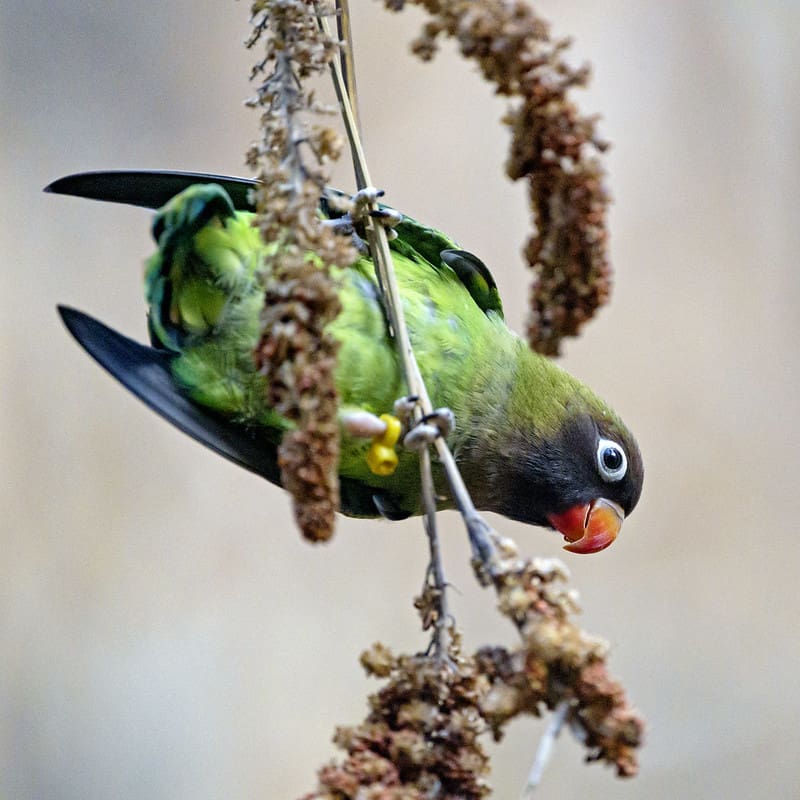Saving Black-cheeked Lovebirds
Black-cheeked Lovebirds are found from southwestern Zambia to Victoria Falls in Zimbabwe in mopane and Acacia woodland, and also in riparian forests. Unfortunately, their woods are being lost through drought and changing agricultural practices. Trapping, although heavy in the past, now occurs at low levels with the potential for increasing activity. These continuing threats are causing the wild population to decline rapidly.
The World Parrot Trust is working with colleagues to conduct conservation and research for Black-cheeked Lovebirds. Continuing research has mapped the species’ distribution and estimated number, identified habitat requirements, evaluated threats, examined the genetics of the ‘eye-ring’ species to inform their conservation and uncovered knowledge gaps for every lovebird species.
Other actions include inspiring local communities to become stewards of these birds and engaging people in education and awareness. Additionally, a ground-breaking paper has uncovered gaps in knowledge for all lovebirds and calls for more targeted research to inform assessments of their population trends, understand the drivers of these trends and highlight opportunities to support their conservation.
Status: IUCN Vulnerable / CITES Appendix II
Population: 3,500-15,000
Range: Highly restricted range, from southern Kafue National Park, southwestern Zambia along Zambesi Valley to Victoria Falls, Zimbabwe.
Natural history: This species is found in mopane and Acacia woodland; also occurs in riparian forests and areas with fig trees, from 600-1000 m (1968-3280 ft). Birds forage for grass and other seeds; also young leaves, grain, flowers, buds, young leaves and berries. They generally stay near water sources and are found in flocks of a few dozen individuals. Breeding is November-December in Zambia; the nest is in a large mopane tree.

